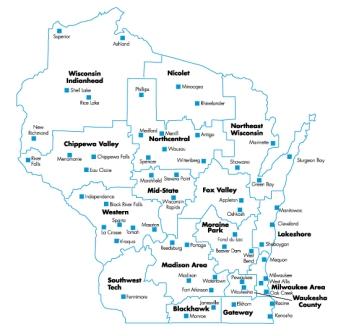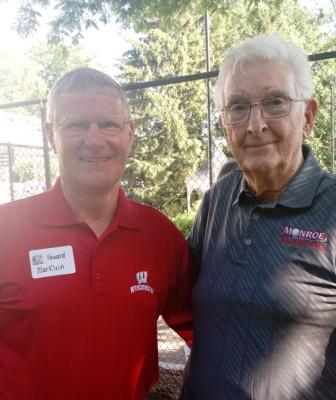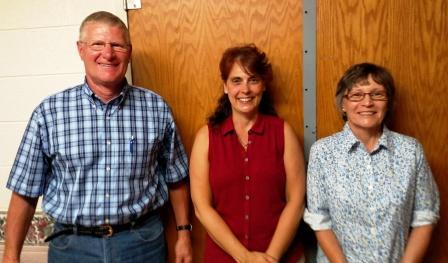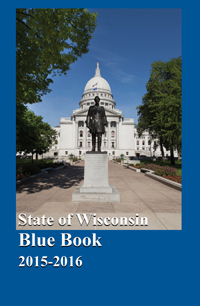|
Outcomes-Based
Funding: Paying For Results
Our state government frequently benefits from applying private-sector
techniques to public sector operations. Too often, government systems become
cumbersome, slow-moving and inefficient because they lack a reason to be
efficient. They can start out focused but lose effectiveness over time.
Without the urgency created by economic factors, supply-and-demand and
competition, government structure can grind along, becoming more complex and
less effective as it grows from year-to-year.
Each session, the legislature seeks ways to combat public sector lethargy. We
look for ways to make our government operations more efficient, effective and
financially responsible. We pursue ways to apply proven private-sector
practices to government operations in an effort to be responsible stewards of
taxpayer dollars while continuing to provide the services taxpayers rely on
every day.
 One great example of
applying private-sector techniques to public-sector operations is
outcomes-based funding which has been incorporated into the funding model for
the Wisconsin Technical College System (WTCS). The WTCS, the Governor and the
legislature designed a funding model that financially rewards technical
colleges for achieving goals directly related to the mission of our technical
college system. One great example of
applying private-sector techniques to public-sector operations is
outcomes-based funding which has been incorporated into the funding model for
the Wisconsin Technical College System (WTCS). The WTCS, the Governor and the
legislature designed a funding model that financially rewards technical
colleges for achieving goals directly related to the mission of our technical
college system.
The WTCS recently released their Graduate Outcomes report for 2015 and
provided an annual Outcomes-Based Funding report to the Joint Finance
Committee (JFC). These reports summarize the efforts and successes in our
technical college system to measure and achieve mission-based goals in
exchange for taxpayer dollars. Follow these links to view the full Graduate
Outcomes report here and the Annual Outcomes-Based Funding report to the JFC.
Overall, WTCS reports a 93% job placement rate for 2015 graduates with 78%
being employed in a job related to their training. For the 7% who are not
employed, 86% are continuing their education. This is good news for
communities in Wisconsin because 62% of technical college graduates stay in
their college district after graduation and 19% move within the state of Wisconsin.
This means that 81% of the people trained at a Wisconsin technical college
stay and live in Wisconsin.
Wisconsin’s technical colleges are doing good things. In order to financially
reward their efforts and tie funding to results, the 2013-15 biennial budget
established a new funding model for allocating 10% of appropriated general
state aid to technical colleges based on nine criteria:
1. job placement rates,
2. degrees and certificates awarded in high demand fields,
3. programs or courses with industry-validated curriculum,
4. the transition of adult basic education students to skills training,
5. the success rate of adults in basic education courses,
6. participation in dual-enrollment programs,
7. workforce training provided to businesses and individuals,
8. participation in collaboration or efficiency initiatives, and
9. training provided to special populations or demographic groups unique to
the district.

The criteria were designed by the WTCS in collaboration with the Governor and
legislature to create a funding model that financially rewards colleges for
meeting mission-based goals and the needs of their customers – students. The
criteria also help the colleges to identify areas they can develop to gain
additional funding, which in turn, enables them to make an even greater
impact on those they serve.
Four technical colleges serve residents of the 17th Senate District;
Southwestern Wisconsin Technical College (SWTC) headquartered in Fennimore,
Western Technical College (WTC) headquartered in LaCrosse, Madison Area
Technical College (MATC or Madison College) headquartered in Madison and
Blackhawk Technical College (BTC) headquartered in Janesville. Each college
has a unique identity and serves their students and communities in different
ways. The outcomes at which they excel also differ, but illustrate the
reasons why outcomes-based funding are effective.
Overall, WTCS campuses received $17,706,980 in Outcomes-Based Funding in
2015-16. The four campuses in the 17th Senate District received 22% of the
funding with SWTC receiving $743,718 (4%), WTC receiving $893,994 (5%), MATC
receiving $1,637,683 (9%) and BTC receiving $725,684 (4%). The following
table illustrates each campuses funding for each area of criteria. Please
note that each college chose seven out of the nine criteria for evaluation
and funding.
|
Criteria
|
SWTC
|
WTC
|
MATC
|
BTC
|
System
Total
|
|
Job
Placement
|
$118,623
|
$145,708
|
$208,602
|
$117,592
|
$2,270,463
|
|
High
Demand Fields
|
$72,646
|
$129,995
|
$277,545
|
$74,776
|
$2,151,890
|
|
Industry
Validated Curriculum
|
$85,635
|
$139,780
|
$
-
|
$103,800
|
$2,151,890
|
|
Adult
Basic Education Transition
|
$
-
|
$96,701
|
$287,092
|
$69,752
|
$1,321,875
|
|
Adult
Basic Education Success
|
$86,038
|
$
-
|
$225,712
|
$116,257
|
$2,033,316
|
|
Dual
Enrollment
|
$
-
|
$
-
|
$
-
|
$
-
|
$1,559,022
|
|
Workforce
Training
|
$175,197
|
$100,901
|
$159,676
|
$
-
|
$1,796,169
|
|
Collaboration
|
$103,889
|
$136,306
|
$247,765
|
$114,178
|
$2,151,890
|
|
Special
Populations
|
$101,691
|
$144,601
|
$231,291
|
$129,329
|
$2,270,463
|
|
Total
Outcomes-Based Funding
|
$743,718
|
$893,994
|
$1,637,683
|
$725,684
|
$17,706,980
|
The Outcomes-Based Funding model shows us where our colleges are focused
and rewards their efforts to serve students and our communities. I am proud
of the efforts of our local technical colleges to meet workforce needs and
look forward to continuing our work to serve the residents of the 17th Senate
District.
|
|
In The 17th Senate District

Pat
Kubly (above), the Kubly family and Colony Brands, Inc. sponsored Monroe
Badger Days this week. This annual event to support UW athletics is always a
highlight of my summer.
Thanks
to the generosity of the Monroe community and especially to the Kublys and
Colony Brands for their school spirit, community efforts and support for our
local economy. Go Bucky!


Great fishing on Lake Michigan for Father's Day with Jeff Palmer, Mark
Bohl, Derrick Bohl and my son Bill on Saturday.

I visited with the teams from Pine Valley Healthcare & Rehab and Schmitt
Woodland Hills this week to discuss the challenges and opportunities they are
working with as they serve the people of Richland County. We had a great,
productive conversation.
Photo: Sen. Howard Marklein, Jackie Carley from Schmitt Woodland Hills and
Kathy Cianci from Pine Valley.
|
|
Useful
Information
Revenue Collections: May 2016 (Fiscal Year 2015-16)
The Wisconsin Department of
Revenue (DOR) recently released a report detailing general purpose revenue
(GPR) taxes collected by the agency for the month of May. This data is
for 11 months of the fiscal year which ends on June 30, 2016.
Department
of Revenue Collections
May
2016 (FY 2016)
($ thousands)
|
Revenue Source
|
FY 2015
|
FY 2016
|
% Change
|
|
|
|
|
|
|
Individual Income
|
6,270,663
|
6,612,234
|
5.4%
|
|
General Sales & Use
|
3,992,589
|
4,123,994
|
3.3%
|
|
Corporate
|
779,973
|
771,095
|
-1.1%
|
|
Excise Taxes
|
575,009
|
580,812
|
1.0%
|
|
Other
|
426,783
|
434,267
|
1.8%
|
|
Total GPR
|
12,045,017
|
12,522,402
|
4.0%
|
*Source: Department
of Revenue
|



 One great example of
applying private-sector techniques to public-sector operations is
outcomes-based funding which has been incorporated into the funding model for
the Wisconsin Technical College System (WTCS). The WTCS, the Governor and the
legislature designed a funding model that financially rewards technical
colleges for achieving goals directly related to the mission of our technical
college system.
One great example of
applying private-sector techniques to public-sector operations is
outcomes-based funding which has been incorporated into the funding model for
the Wisconsin Technical College System (WTCS). The WTCS, the Governor and the
legislature designed a funding model that financially rewards technical
colleges for achieving goals directly related to the mission of our technical
college system. 






